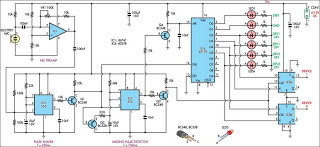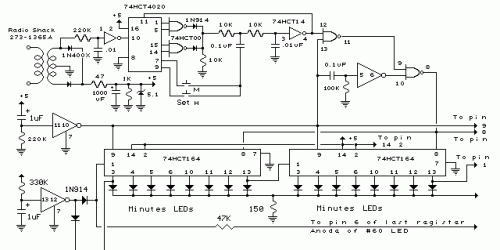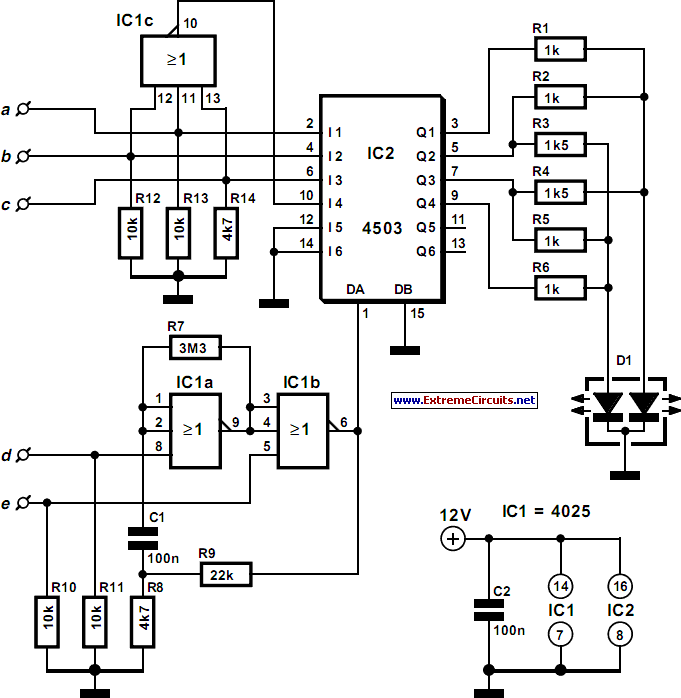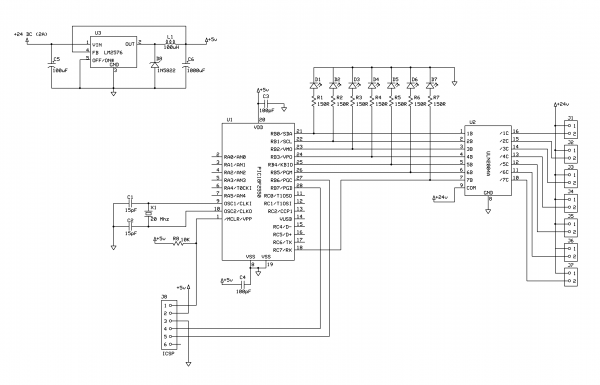
FAHRENHEIT CENTIG RADE LED THERMOMETER
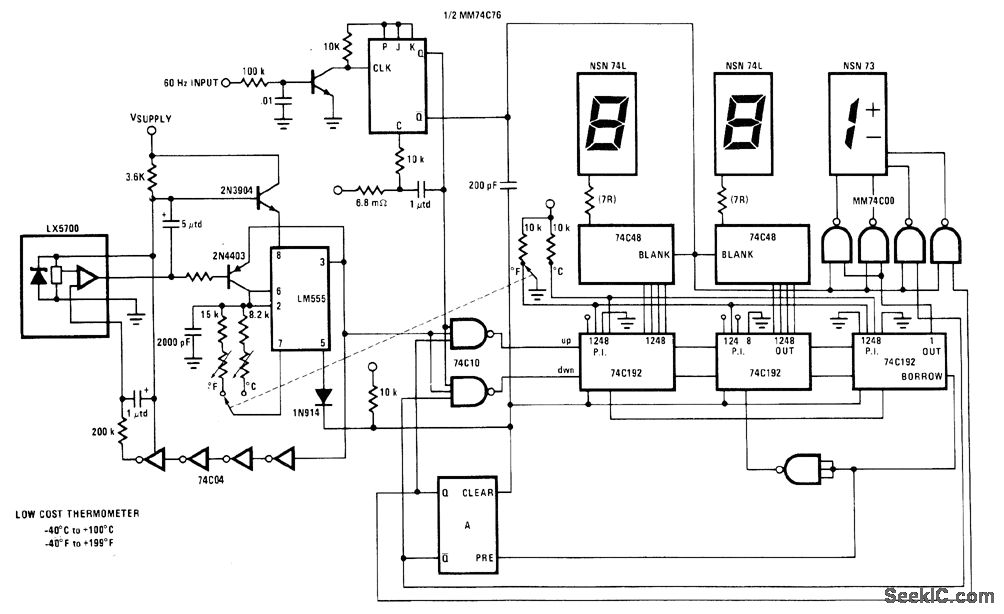
The National LX5700 temperature transducer supplies input to a code conversion circuit that drives a 3-digit LED display. This display indicates temperatures ranging from -40°F to +100°F or -40°F to +199°F, controlled by a ganged switch.
The National LX5700 is a precision temperature transducer designed to convert temperature variations into corresponding electrical signals. The device operates within a specified temperature range, making it suitable for various applications where temperature monitoring is essential.
The code conversion circuit associated with the LX5700 processes the output signals from the transducer, converting them into a digital format suitable for display. The circuit typically includes an analog-to-digital converter (ADC) that interprets the voltage output from the LX5700 and translates it into a binary code. This binary code is then utilized to control a 3-digit LED display, which visually represents the measured temperature.
The temperature range of the device extends from -40°F to +100°F or from -40°F to +199°F, allowing for flexibility in applications where different temperature thresholds are relevant. The ganged switch serves as a control mechanism, enabling users to select the desired temperature range for display. This feature enhances the usability of the temperature measurement system, allowing for quick adjustments based on the specific needs of the user.
In summary, the integration of the National LX5700 temperature transducer with a code conversion circuit and a 3-digit LED display provides an efficient and effective means for monitoring temperature across a broad range, facilitating precise temperature readings in various electronic applications.National LX5700 temperature transducer provides input for code conversion circuit driving 3-digit LED display indicating temperature range from -40ƒ to +100ƒ or -40 °F to +199 °F under control of ganged switch. -"Linear Applications , Vol. 2, " National Semiconductor, Santa Clara CA. 1976, LB-30. 🔗 External reference
The National LX5700 is a precision temperature transducer designed to convert temperature variations into corresponding electrical signals. The device operates within a specified temperature range, making it suitable for various applications where temperature monitoring is essential.
The code conversion circuit associated with the LX5700 processes the output signals from the transducer, converting them into a digital format suitable for display. The circuit typically includes an analog-to-digital converter (ADC) that interprets the voltage output from the LX5700 and translates it into a binary code. This binary code is then utilized to control a 3-digit LED display, which visually represents the measured temperature.
The temperature range of the device extends from -40°F to +100°F or from -40°F to +199°F, allowing for flexibility in applications where different temperature thresholds are relevant. The ganged switch serves as a control mechanism, enabling users to select the desired temperature range for display. This feature enhances the usability of the temperature measurement system, allowing for quick adjustments based on the specific needs of the user.
In summary, the integration of the National LX5700 temperature transducer with a code conversion circuit and a 3-digit LED display provides an efficient and effective means for monitoring temperature across a broad range, facilitating precise temperature readings in various electronic applications.National LX5700 temperature transducer provides input for code conversion circuit driving 3-digit LED display indicating temperature range from -40ƒ to +100ƒ or -40 °F to +199 °F under control of ganged switch. -"Linear Applications , Vol. 2, " National Semiconductor, Santa Clara CA. 1976, LB-30. 🔗 External reference
Warning: include(partials/cookie-banner.php): Failed to open stream: Permission denied in /var/www/html/nextgr/view-circuit.php on line 713
Warning: include(): Failed opening 'partials/cookie-banner.php' for inclusion (include_path='.:/usr/share/php') in /var/www/html/nextgr/view-circuit.php on line 713
